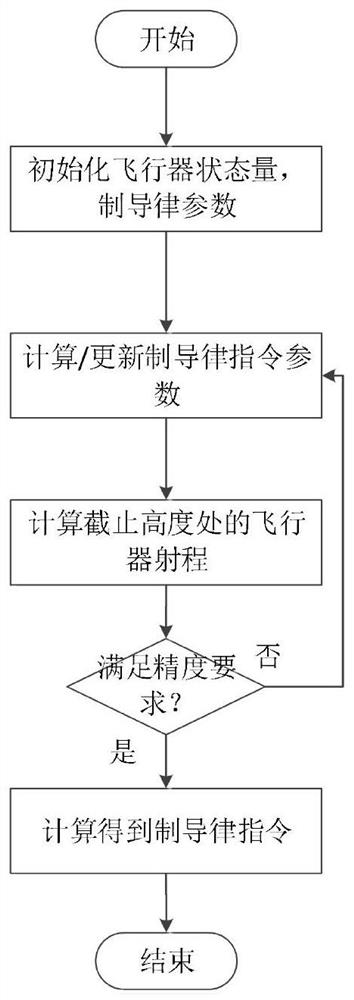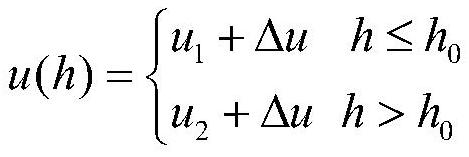Standard trajectory tracking guidance method based on height-range ratio
A standard trajectory and range technology, applied in the direction of vehicle position/route/height control, control/regulation system, non-electric variable control, etc., to achieve the effect of simple form, small amount of calculation, and improved guidance accuracy
- Summary
- Abstract
- Description
- Claims
- Application Information
AI Technical Summary
Problems solved by technology
Method used
Image
Examples
Embodiment 1
[0032] A standard trajectory tracking guidance method based on altitude-to-range ratio, said method comprising the steps of:
[0033] Step 1: According to the initial state of the aircraft and the final desired state (including speed and position), determine the total range of the aircraft, and obtain the altitude-velocity corridor of the aircraft under the constraint conditions ( re-entry corridor);
[0034]
[0035]
[0036] Among them, n max In order to allow the maximum overload; m T is the mass of the aircraft; S is the characteristic area of the aircraft; C y is the aerodynamic coefficient; q max is the allowable maximum dynamic pressure; ρ is the atmospheric density;
[0037] Since both the atmospheric density and the aerodynamic coefficient in the above formula can be described as a function of height, the maximum velocity at different heights can be calculated according to the above formula, and the upper boundary v of the re-entry corridor can be obtained...
Embodiment 2
[0065] Such as: the standard trajectory tracking guidance method under the condition that there is uncertainty in the aerodynamic environment of the variable center of mass reentry vehicle, the method includes the following steps:
[0066] Step 1: According to the initial state of the aircraft and the final desired state (including speed and position), determine the total range of the aircraft, and obtain the altitude-velocity corridor of the aircraft under the constraint conditions ( re-entry corridor);
[0067]
[0068]
[0069] Among them, n max In order to allow the maximum overload; m T is the mass of the aircraft; S is the characteristic area of the aircraft; C y is the aerodynamic coefficient; q max is the allowable maximum dynamic pressure; ρ is the atmospheric density;
[0070] Since both the atmospheric density and the aerodynamic coefficient in the above formula can be described as a function of height, the maximum velocity at different heights can be ca...
PUM
 Login to View More
Login to View More Abstract
Description
Claims
Application Information
 Login to View More
Login to View More - R&D
- Intellectual Property
- Life Sciences
- Materials
- Tech Scout
- Unparalleled Data Quality
- Higher Quality Content
- 60% Fewer Hallucinations
Browse by: Latest US Patents, China's latest patents, Technical Efficacy Thesaurus, Application Domain, Technology Topic, Popular Technical Reports.
© 2025 PatSnap. All rights reserved.Legal|Privacy policy|Modern Slavery Act Transparency Statement|Sitemap|About US| Contact US: help@patsnap.com



